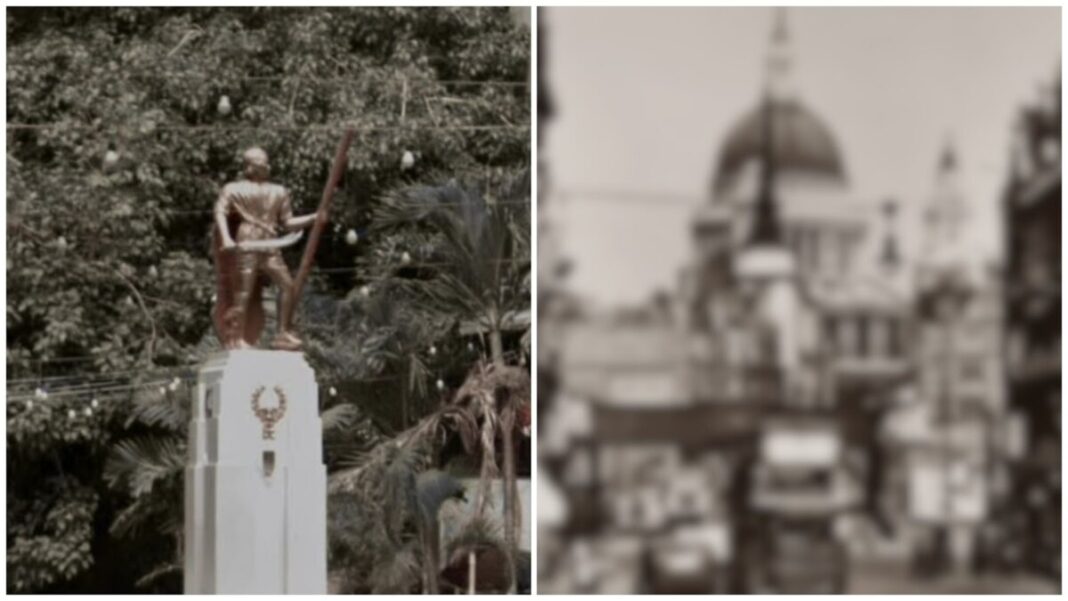What if honoring a hero accidentally awakened the wrath of one?
The scent in the wind of Opon, Lapu-Lapu, is more than just the rush of the seabreeze; it carries legends and a curse that the locals believed once before. In the waves of the Mactan Channel that hit the shore, a 20-meter Bronze statue of Datu Lapu-Lapu, the first Filipino hero to repel foreign invaders on the island, stands. Its original bow and arrow, long replaced by its stories, are still in the memories of the elders. But beyond its fascinating structure and memorial lies a tale that questions its authenticity, whether it was a good idea that evokes goosebumps in visitors and locals every time they hear this tale.
Face Off Gone Wrong
The creation of the statue was intended to commemorate the historic victory of Lapu-Lapu over Ferdinand Magellan in 1521 and serve as a symbol of national pride, reminding us of the sacrifices made by our local heroes. Yet from the moment it was finished, strange things started to happen, and something feels off and wrong. The bow of Lapu-Lapu was not aimed at the foreign invaders, but it was shot straight at the town’s center of governance. The stand of the warriors, with its back turned to the sea, led his people to triumph for freedom. Primarily, a warrior never turns his back on his enemy, as they murmur, which was no mere artistic insight but a grave insult to his spirit. They believe that the statue’s posture has awakened something relentless in the air as a presence that refuses to be ignored.
Fatalities Within the Wreckage
A strange occurrence began the moment the statue was completed. The officials involved in its construction encountered various challenges. The Opon Municipal President, Rito de la Serna, who had overseen the construction and completion of the monument, suddenly passed away months later. He is also a local politician who dismissed critics and successors; moreover, a local politician who rejected critics and successors has died in mysterious ways, alongside Simeon Amodia and his cousin Gregorio de la Serna. Is it a coincidence? Maybe, but in a land where folklore and reality collide with each other, the people in Mactan know better than to test the spirit’s patience.
The Soul of What Remains
The attempt to correct the statue’s orientation is met with an eerie resistance. When Mayor Arturo Radaza proposed relocating the monument to face the sea in 2007, the project was unexpectedly stalled, despite having allocated funds. The construction crews report some unusual events, including equipment failures, the disappearance of tools overnight, and an overwhelming sense of fear when working near the site. Whether out of fear or symbolism, this act was seen as a gesture of peace, and a way to let the spirit’s fury ease. Even though there are no new misfortunes publicly linked during the revision of the statute, the legend still lived on in hushed tones.
Warrior Wakes the Wise Ones
The Visayan community believes that modern worries are often connected to ancestral spirits and sacred places. In pre-colonial times, people thought that the souls of warriors protected their battlefields forever, and the sea was honored as the main home of their ancestral god. Some community members worry that certain modern statues may be disrespectful because they overlook both historical significance and the sea’s importance. This concern ties back to legends about disturbed ancestral grounds, which are thought to cause bad luck. Stories about events like the controversial digging up of ancient burial sites near Cordova highlight the need to respect cultural heritage and sacred spaces.
The statue stands as a mysterious yet popular attraction during the day, drawing tourists while locals maintain a wary distance after sunset. Although the original statue has been replaced, its stories linger in the memories of the elders. The eerie tales surrounding the deaths of certain officials may have transformed into legend, yet the statue remains a link to the past. It invites us to look beyond mere myth and to confront the complex, often unsettling ways we remember our heroes.
True history, as it turns out, is not solely found in textbooks but is embedded in the whispered fears, beliefs, and warnings that are shared through generations. The idea of a curse may not be rooted in the supernatural, but rather in our tendency to overlook the deeper truths.

